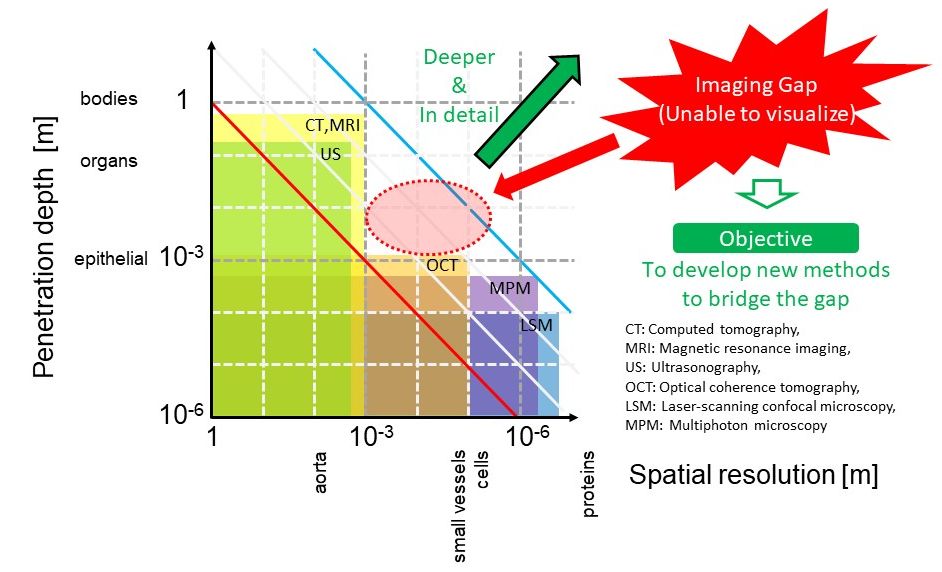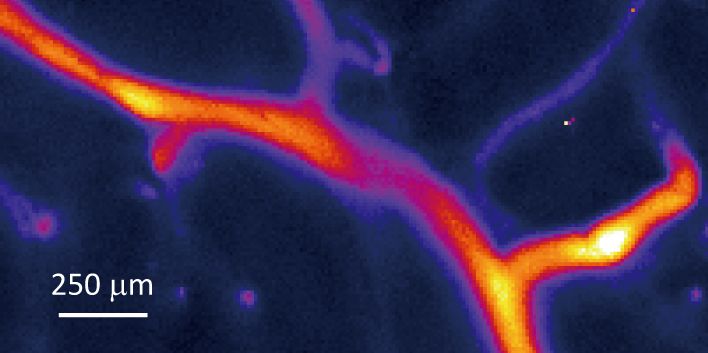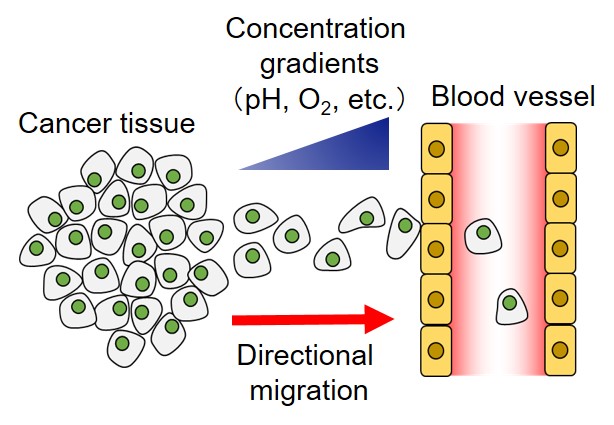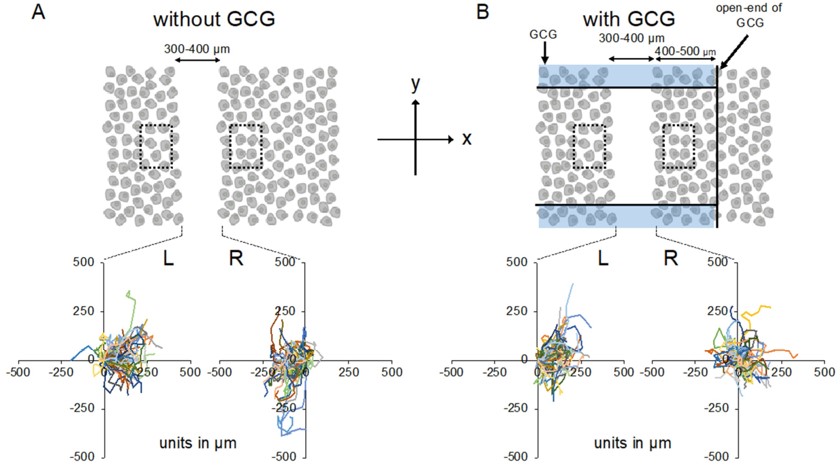RESEARCH
Photoacoustic imaging to visualize deep structures in living tissues
Accurate detection of the growth extent of cancer cells in depth direction is very important. In particular, depth discrimination of melanoma cells is extremely essential because even a tiny difference in the invasion of cancer cells strongly determines the outcome for the patients . Depth resolution less than 10 um (size of cells) is required to discriminate individual cells. As for the imaging depth, several mm is required, because the thickness of skin tissues is of several-mm order. Imaging with 10-um resolution is also important to visualize small vascular channels, key constituents in living tissues. In this way, imaging over several-mm depth with 10-um spatial resolution is desired in clinical applications.
Optical imaging typified by laser-scanning microscopy has a spatial resolution high enough to observe single cells. However the penetration depth of more than 1 mm is difficult to obtain. On the other hand, magnetic resonance imaging (MRI), computed tomography (CT) and ultrasonography (US), which are commonly used in medicine, can visualize deeply enough to investigate whole human bodies. However, the spatial resolution is not high enough to observe single cells. Thus, imaging modalities with a spatial resolution of 10 um at around several mm depth do not exist (Fig. 1). To bridge this gap in imaging modalities, we have studied and developed various types of photoacoustic imaging (especially, two-photon photoacoustic microscopy (TP-PAM) for the first time (Y. Yamaoka, et al, Opt. Express 19, 13365-77, 2011.), Y. Yamaoka, et al, Opt. Express 22, 17063-72, 2014.)).


Improvement of spatial resolution in photoacoustic microscopy using adaptive optics
To improve the spatial resolution in photoacoustic microscopy (PAM), an objective lens with high numerical aperture (NA) is commonly used. However, when deeper layers of living tissues are visualized, photoacoustic images become blurred due to the influence of aberration. To overcome this drawback, we have combinded an adaptive optics using a transmissive liquid-crystal element with PAM. The transmissive liquid crystal element is so thin that it can be easily installed in PAM system. The developed system was able to improve the spatial resolution of PAM (Fig. 3, Y. Notsuka, et al, Proc. SPIE 11240, 1124039, 2020.). Adaptive optics is a wavefront control technology that controls the spatially-distributed phase of the irradiation light. The refractive index of liquid crystal changes depending on "birefringence of liquid-crystal molecules" and "molecular tilting depending on applied electric field" (Fig. 4).


What do cancer cells seek to move? Research for elucidating the mechanism of cancer metastasis.
Cancer is the leading cause of death in Japan. However, 90 % of the dead is because of metastasis. Metastasis is a cancer behavior that cancer cells migrate from the site where they originated to another site away from there and then create new tumors. Some migrate through blood vessels: hematogenous metastasis. In order to overcome cancer, it is necessary to prevent metastasis, but the mechanism of metastasis has not been elucidated.
We are conducting research with the goal of elucidating the mechanism of hematogenous metastasis. That is, we are investing the possibility of cancer cells actively migrating toward a blood vessel by using some factors around the blood vessel as clues in the initial process of hematogenous metastasis: between cancer cells leaving the site where they originated and their reaching a blood vessel. Above all, we are investigating pH and oxygen concentration as such factors (Fig. 5).
In cancer tissue, pH and oxygen concentration decrease as the distance from the blood vessels increases. Such conditions are artificially created in a cell culture dish, and it is observed whether the cells under the conditions actively migrate in the directions of high pH or high oxygen concentration: the direction toward blood vessels. Thus, we verify whether pH or oxygen concentration can be one of the factors or not. At this point, we have confirmed that MDA-MB-231 cells, one of cancer cells, migrate significantly toward high pH region (Fig. 6, E. Takahashi, et al., Int. J. Mol. Sci. 2020, 21, 2565.).

